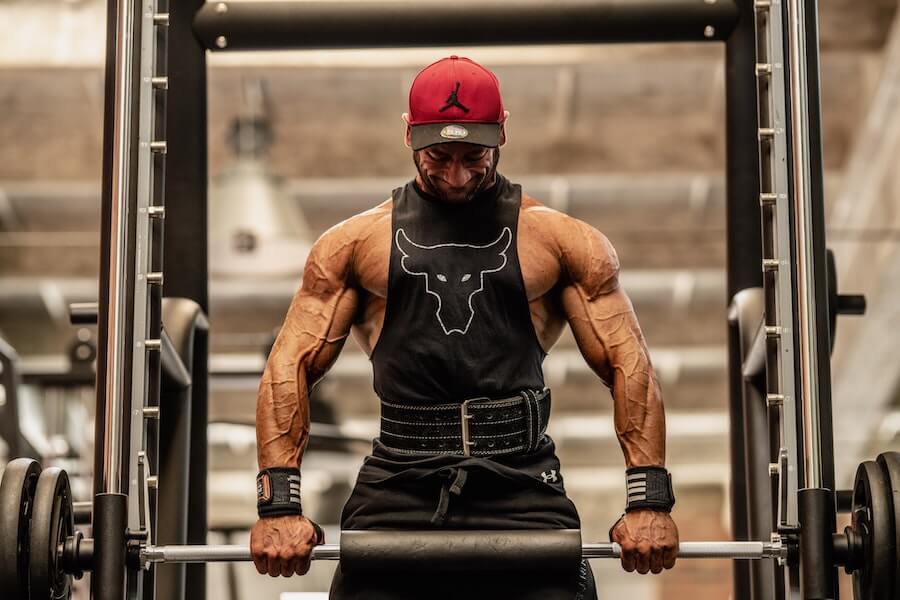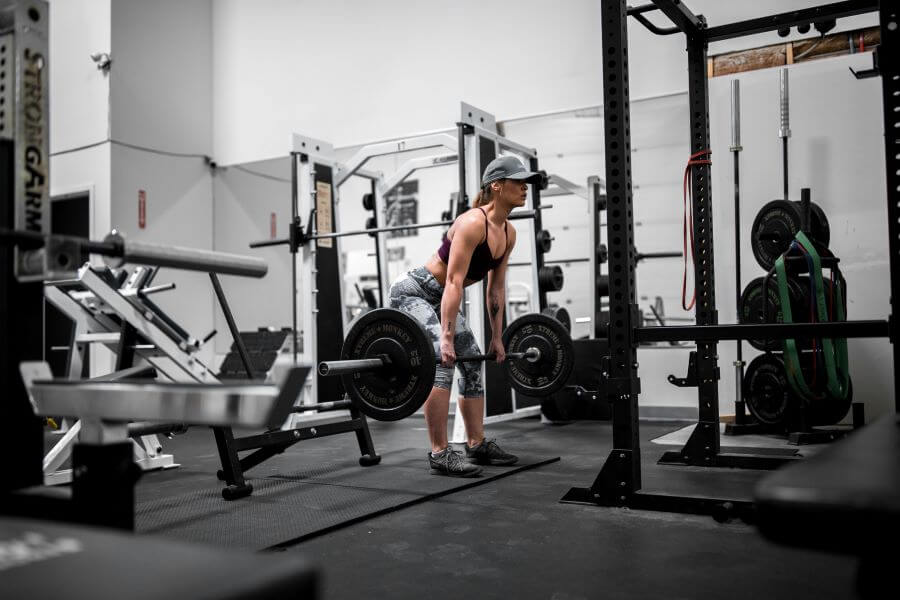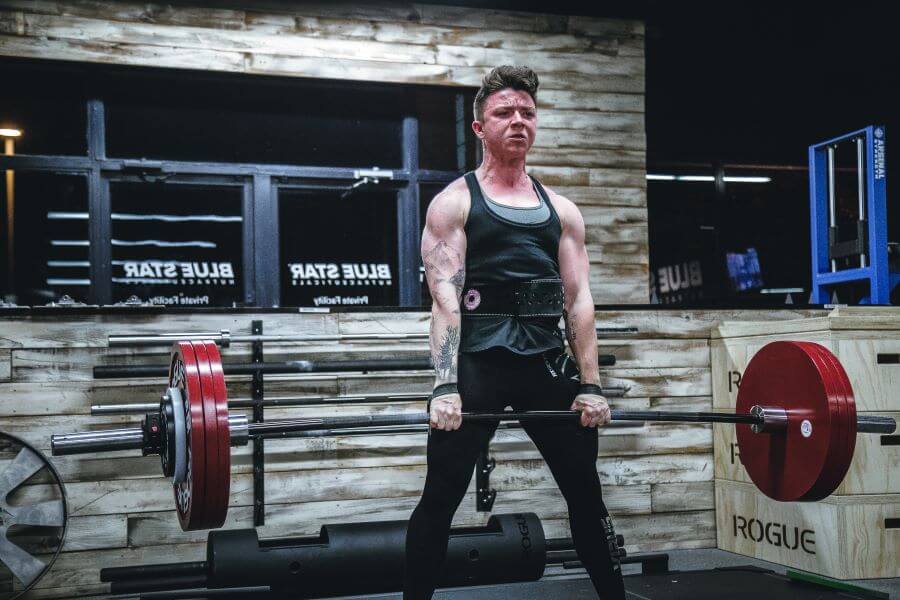The rack pull and Romanian deadlift (RDL) are compound exercises that often generate discussions among strength training enthusiasts.

This article explores each exercise’s key differences and benefits, aiding individuals in optimizing their training programs and achieving specific goals.
We will examine the execution, targeted muscles, strength-building potential, and application of rack pulls and RDLs in various training scenarios.
Understanding these nuances allows readers to make informed decisions about exercise selection, form, and progression strategies.
Whether you’re a seasoned lifter or a beginner, this article will provide valuable insights into the rack pull vs. RDL comparison, enhancing your fitness journey.
Comparison: Rack Pull vs. RDL
Rack Pull
The rack pull is a compound exercise that involves lifting a loaded barbell from a set of pins or safety bars positioned at knee level or slightly above.
Unlike a conventional deadlift, which starts from the floor, the rack pull allows lifters to focus on the upper portion of the movement, explicitly targeting the posterior chain.
By shortening the range of motion, the rack pull emphasizes building strength and power in the glutes, hamstrings, and lower back.
Romanian Deadlift (RDL)
The Romanian deadlift (RDL) is a popular compound exercise that primarily targets the posterior chain, including the hamstrings, glutes, and lower back.
Unlike the conventional deadlift, the RDL emphasizes the eccentric or lowering phase of the movement, promoting greater muscle activation and control.
It involves hinging at the hips while maintaining a slight bend in the knees, lowering the barbell along the front of the legs, and then returning to the starting position with controlled hip extension.
Differences in Execution and Movement Patterns
The rack pull and RDL differ in their execution and movement patterns:
- Starting Position: The rack pull begins with the barbell elevated on pins or safety bars at knee level or slightly higher, while the RDL starts from a standing position with the barbell in front of the thighs.
- Range of Motion: The rack pull has a shorter range of motion, focusing on the upper portion of the deadlift movement, while the RDL involves a more extended range of motion, emphasizing the eccentric phase and stretching the hamstrings.
- Body Positioning: In the rack pull, the knees are typically less flexed, and the torso is more upright than the RDL, with a greater hip hinge and a more inclined torso.

Muscles Targeted and Emphasized
The rack pulls and RDL target overlapping but distinct muscle groups:
- Rack Pull: The rack pull primarily targets the glutes, hamstrings, and lower back. It emphasizes the upper posterior chain and traps, particularly the erector spinae.
- RDL: The RDL also targets the glutes, hamstrings, and lower back, but it places additional emphasis on the hamstrings. It engages the calves, quadriceps, and upper back muscles, such as the rhomboids and traps.
Impact on Strength, Power, and Muscle Development
Both exercises contribute to strength, power, and muscle development, but with slight variations:
- Strength and Power: The rack pull, by targeting the upper portion of the deadlift movement, helps improve strength and power in the lockout phase. It enhances grip strength and is beneficial for powerlifters focusing on lockout strength. The RDL, with its emphasis on the eccentric phase and greater hip hinge, enhances strength, power, and control throughout the entire deadlift movement.
- Muscle Development: The rack pull emphasizes the erector spinae and traps, making it beneficial for developing a strong and stable core, upper back, and grip strength. The RDL, with its longer range of motion and focus on the hamstrings, provides greater stimulation for hamstring and glute development, contributing to improved lower body strength and aesthetics.
Application and Suitability for Different Training Goals
The rack pull and RDL have specific applications based on training goals:
- Rack Pull: The rack pull is often used for powerlifting and strength-focused training, as it helps develop lockout strength and targets specific muscles involved in deadlifting. It suits individuals looking to improve their deadlift performance, enhance grip strength, and build upper body and core stability.
- RDL: The RDL is valuable for various training goals, including hypertrophy, muscle development, and functional strength. It targets the posterior chain and can benefit individuals aiming to enhance hamstring and glute development, improve hip hinge mechanics, and strengthen the lower back.
Considerations for Injury Prevention and Rehabilitation
When considering injury prevention and rehabilitation, the rack pull and RDL have certain factors to consider:
- Rack Pull: With its shorter range of motion and reduced stress on the lower back, the rack pull may be more suitable for individuals with lower back issues or limitations. It allows for controlled loading and can be used as a transitional exercise during rehabilitation.
- RDL: The RDL, emphasizing the eccentric phase and increased stretch on the hamstrings, requires careful consideration for individuals with pre-existing hamstring or lower back injuries. Proper form, gradual progression, and adequate warm-up are crucial when incorporating RDLs into injury prevention or rehabilitation programs. Modifying the range of motion or decreasing the load initially may be necessary to avoid exacerbating existing injuries.

Choosing the Right Exercise for Your Goals
Factors to Consider When Selecting Between Rack Pull and RDL
When deciding between the rack pull and RDL, consider the following factors:
- Targeted Muscles: Evaluate which muscle groups you want to prioritize in your training. The rack pull may be more suitable for focusing on the upper back, core stability, and grip strength. For individuals seeking greater hamstring and glute development, the RDL is a better choice.
- Movement Pattern: Assess your movement preferences and comfort. The rack pull involves a shorter range of motion and a more upright torso, while the RDL requires a deeper hip hinge and a more extended range of motion.
- Training Experience: Consider your familiarity with each exercise. The rack pull may be more beginner-friendly due to its reduced complexity and shorter range of motion. At the same time, the RDL requires more attention to form and technique.
- Equipment Availability: Evaluate equipment availability like power racks or squat racks for the rack pull, barbells, and free weights for the RDL.
Training Goals and Specificity
Aligning your exercise selection with your training goals is crucial:
- Strength and Power: If you aim to improve deadlift lockout strength and overall powerlifting performance, incorporating rack pulls into your routine can be beneficial. It provides specificity to the deadlift movement and enhances strength in the upper portion of the lift.
- Muscle Development and Hypertrophy: For individuals seeking muscle growth and development, the RDL is a versatile exercise that targets the posterior chain. It emphasizes the hamstrings and glutes, making it ideal for lower-body hypertrophy and overall muscle development.
Individual Differences and Body Mechanics
Consider your differences and body mechanics when choosing between the rack pull and RDL:
- Mobility and Flexibility: Assess your mobility and flexibility in the hamstrings, hips, and lower back. The RDL requires more flexibility in these areas, and individuals with limited mobility may need to improve their range of motion before incorporating RDLs.
- Injury History and Pre-existing Conditions: Consider any past injuries or pre-existing conditions. Individuals with lower back issues may find the rack pull more suitable due to its reduced stress on the lower back. Those with hamstring issues should.

Some people collect expensive old cars, and I’m into collecting bikes. I have 15 different bikes: special mountain bikes, sportbikes, professional, amateur, and city bikes. My friends and colleagues call me a ‘bike expert’ because I give advice on how to choose the right bike.
I’m also a massive fan of gym culture and heavyweight workouts. I met Alan at my local gym, and we’ve become friends quite soon. His idea of starting a sports blog seemed interesting to me, so I agreed to help.





